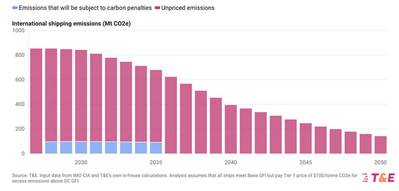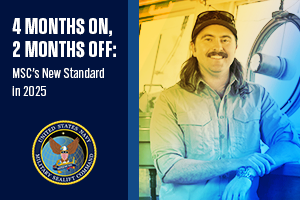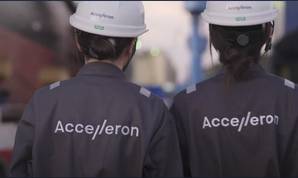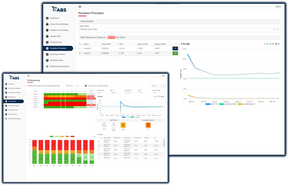Stakeholders Respond to MEPC 83 Outcome
The IMO Net-zero Framework agreed at MEPC 83 last week is the first in the world to combine mandatory emissions limits and GHG pricing across an entire industry sector.
The measures include a new fuel standard for ships and a global pricing mechanism for emissions.
These measures, set to be formally adopted in October 2025 before entry into force in 2027, will become mandatory for large ocean-going ships over 5,000 gross tonnage, which emit 85% of the total CO2 emissions from international shipping.
Under the draft regulations, ships will be required to comply with:
Global fuel standard: Ships must reduce, over time, their annual greenhouse gas fuel intensity (GFI) – that is, how much GHG is emitted for each unit of energy used. This is calculated using a well-to-wake approach.
Global economic measure: Ships emitting above GFI thresholds will have to acquire remedial units to balance its deficit emissions, while those using zero or near-zero GHG technologies will be eligible for financial rewards.
There will be two levels of compliance with GHG Fuel Intensity targets: a Base Target and a Direct Compliance Target at which ships would be eligible to earn “surplus units”.
Ships that emit above the set thresholds can balance their emissions deficit by transferring surplus units from other ships, using surplus units they have already banked, and using remedial units acquired through contributions to the IMO Net-Zero Fund.
Additionally, the IMO Zet-Zero Fund will be established to collect pricing contributions from emissions. These revenues will then be disbursed to reward low-emission ships, support initiatives in developing countries and mitigate negative impacts on vulnerable States, such as Small Island Developing States and Least Developed Countries.
MEPC 83 was marked by significant discord. The United States withdrew from the negotiations before they commenced, citing concerns over the economic impacts and fairness of the proposed carbon levy, introducing uncertainty into the global regulatory landscape. Additionally, a coalition of countries, including China, Brazil, Saudi Arabia, and South Africa, advocated for a credit trading system as an alternative to a flat carbon tax.
International Chamber of Shipping
Guy Platten, Secretary General of the International Chamber of Shipping said: “We recognise that this may not be the agreement which all sections of the industry would have preferred, and we are concerned that this may not yet go far enough in providing the necessary certainty. But it is a framework which we can build upon.”
World Shipping Council
“This is a major milestone for climate policy and a turning point for shipping. Our industry has long been labelled as ‘hard to abate,’ but record industry investment and a new global measure can turn the tide on that,” said World Shipping Council President & CEO Joe Kramek. “Liner shipping has already moved to kick-start decarbonization, with nearly 1000 renewable-capable ships set to be on the water by 2030. However, a global regulation is necessary to deliver the renewable fuels at a commercially viable price. Outcomes from the IMO today mean global regulations can now begin to leverage the record industry investment to meet decarbonization targets.”
European Shipowners
“Shipping will be the first sector to have a globally agreed carbon price. It is key that multilateral cooperation at UN level delivers concrete action in times of increasing uncertainty, to achieve the 2050 net zero emissions target. Even though the agreement is not perfect, it is a good starting point for further work. It is a framework which we can build upon to ensure the necessary investment in the production of clean fuels” said Sotiris Raptis, Secretary General of European Shipowners | ECSA.
Danish Shipping
“We would have liked something more ambitious. That’s clear. But I still believe it’s a great victory that an agreement has been reached which moves us in the right direction – especially against the current geopolitical backdrop. From Denmark and Europe, we have worked to make emissions even more expensive. That would have benefited the most ambitious shipping companies and at the same time generated more revenue to ensure a fair transition. But still – we’ve pitched the tent, and we’ll tighten the ropes as we go. It will take a dedicated effort leading up to the final adoption in October,” said Anne H. Steffensen, CEO of Danish Shipping.
Global Maritime Forum
“While we applaud the progress made, meeting the targets will require immediate and decisive investments in green fuel technology and infrastructure. The IMO will have opportunities to make these regulations more impactful over time, and national and regional policies also need to prioritise scalable e-fuels and the infrastructure needed for long-term decarbonisation,” says Jesse Fahnestock, Director of Decarbonisation at the Global Maritime Forum.
T&E
For the first time there will be an IMO framework that will generate limited revenues for decarbonisation, though T&E’s snap analysis shows that this falls short by a large margin of what is needed to incentivise clean fuels and contribute to a just and equitable transition. The rules also set targets of emission reductions. Ships that are not meeting targets would face financial penalties through the purchase of Remedial Units (RUs). On the other hand, ships that go beyond the most stringent targets could potentially generate and sell Surplus Units (SUs) that could be banked for future use or transferred to other ships. There are also financial rewards for zero and near-zero emission fuels.
But there are problems with the design of the pricing system. The current package will exempt nearly 90% of excess shipping emissions from carbon penalties via RUs. According to analysis from T&E, this will generate around $10 billion per year until 2035 in revenues, although how and when it will be distributed is heavily dependent on the creation of an IMO Net-Zero Fund. This is likely to take time.
Faig Abbasov, shipping director at T&E, said: "Multilateralism isn't dead. Despite a tumultuous geopolitical environment, the IMO deal creates a momentum for alternative marine fuels. But unfortunately it is the forest-destroying first generation biofuels that will get the biggest push for the next decade. Without better incentives for sustainable e-fuels from green hydrogen, it is impossible to decarbonise this heavy polluting industry. The ball is now in the court of individual countries to implement national policies to open a life-line to green e-fuels".
UCL Energy Institute
Dr Marie Fricaudet, Senior Research Fellow at the UCL Energy Institute, said: “This adoption is a first step in the right direction, with now a part – although small – of shipping emissions being subject to what is effectively a global levy. However, with an expected fall in emissions of around 10% by 2030 compared to 2008, the level of ambition is largely insufficient to meet the IMO target of emission reduction, let alone to meet a 1.5OC trajectory.”
Dr Tristan Smith, Professor of Energy and Transport at the UCL Energy Institute said: “This transition is ultimately going to move fast even if it starts slowly. This means that the classic shipping business model of buying/selling on the cycle, which depends upon a technology risk-free residual value, will not work. The fact this policy sends at least that signal clearly, can be expected to avoid some of the greatest risks of technology lock-in e.g. to further expand LNG use. And it can be expected to now focus minds on how best to make the move to hydrogen-derived fuels. Whilst the clarity and equitability and inclusivity are not as high as they should be, this is undoubtedly a pivot moment for the sector and its GHG emissions.”
BAR Technologies
BAR Technologies emphasises that wind propulsion is a solution that can be implemented immediately without the need for prolonged discussions, committee meetings or waiting until 2032. Wind propulsion is a 'no-brainer' solution that significantly reduces emissions while offering economic returns. The maritime sector is already progressing, with wind technology installations and optimised primary wind newbuilds doubling this year to over 100 ships and over 5 million dwt of shipping equipped with some form of wind propulsion. Yet, the potential for accelerated adoption remains significant. Now is the time to harness this momentum by embracing wind propulsion. The industry can achieve immediate emissions reductions and realise substantial economic benefits. The opportunity is here and now to act decisively to propel maritime sustainability forward.
















